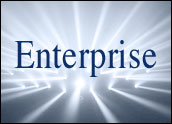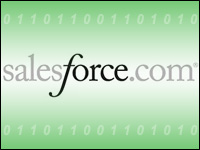
How good is the match between Software AG and its recent acquisition webMethods? Was is strictly a geographical sales force synergy? Or will webMethods become the de facto R&D (research and development) arm of Software AG while the parent firm’s legacy cash flow sustains the movement toward SOA (service-oriented architecture)? Are the mutual product sets well aligned to provide a fuller SOA suite offering? All of the above?
We posed these and other questions to our panel of independent IT industry analysts in a recent podcast discussion. We also delve into the ongoing heavy breathing between SOA and Web 2.0. Should governance be done be wikis, for example? Is this mashup of SOA and Web 2.0 a weekend dalliance? Or a love affair for life?
Lastly, we sink our collective analyst teeth into the notion that SOA — gasp! — is being hyped too much. Some of us actually think the opposite.
So set your SOA compass to “I” for insights and join us for another 50-minute discussion. Feel free to listen, subscribe via iTunes (search on BriefingsDirect), or peruse the full transcript.
Not a SOA junkie? Well then just take a peek at some of the highlights here:
Our analyst panel for this edition of the podcasts consists of noted IT industry analysts and practitioners Steve Garone, Joe McKendrick, Jim Kobielus, Tony Baer and Todd Biske. I am your host and moderator.
Here are some excerpts:
On Software AG and webMethods
Tony Baer: I think that webMethods has been looking for an exit strategy for some time, because basically they’re trying to build up their SOA platform story. The fact is that large corporate customers are going to be nervous with a US$200 million company. They’re probably a lot more comfortable with a company that’s closer to $1 billion, if they’re looking for a platform play.
One of the challenges that will be before Software AG — and I think an indicator as to whether they are successfully getting the message out to their customers — is how they handle this transition with BPM (business process management). Obviously, having an internal product is going to be a lot more attractive than having to partner for it.
Jim Kobielus: It’s pretty clear that from a geographic standpoint it’s very complementary. Actually, it’s more complementary from a product standpoint than many there have been willing take credit for. Software AG … is very strong on legacy modernization of the whole mainframe-based setup products for development, databases and so forth.
webMethods is very strong on integration, BPM and the whole SOA stack registries. There is some redundancy with Software AG’s products, such as the whole Crossvision Suite, but I think that from a technological standpoint webMethods is stronger on BPM, the repository and all of those SOA components than the company that’s acquiring it. There definitely are a lot of synergies there.
Dana Gardner: So, you’re saying that webMethods is ahead of its time, and Software AG might be behind the times, and so together they are going to be on time?
This smacks of a good sales and channel matchup, and they might run webMethods as a subsidiary for some time. Then there’s also this balance-sheet issue, where Software AG has recurring revenue. It’s got an old cash cow to continue to milk, and that gives webMethods an opportunity to be funded and financed — without the vagaries of a quarterly report to Wall Street — to pursue the larger brass ring here, which is SOA.
On SOA and Web 2.0 Mashups
Let’s just leave the Web 2.0 definition off the table and look at the issue of any of these new activities, whether it’s social networking or rich Internet application interfaces or whether it’s taking advantage of more semantics and BPEL (business process execution language) as a process relating to Web activities instead of just as a publishing medium. Let’s just say, “All of the above” for defining Web 2.0 and how this relates to SOA.
Gee, maybe wikis would be a good concept for how people manage their SOA services. It’s sort of an open source, open collaboration approach to policy and use of services and their agreements.
Kobielus: Wikis and the whole Web 2.0 repertoire of collaborative tools can be very valuable in this upfront design, modeling, simulation and shoot-the-breeze aspects that are critically necessary for design time. But runtime SOA governance really depends on clear-cut policies, designs, data definitions and so forth that have been handed down by the policy gurus, and now are governing ongoing operations without ambiguity.
In that case, you don’t necessarily want any Joe Blow to be able to overwrite the policies and the business rules that are guiding the ongoing monitoring, management control or security of your SOA.
Todd Biske: I don’t know that you really want a wiki-style collaboration for governance. … Even if you look at collaborative environments, whether it’s the large open source projects, or something like Wikipedia, there’s some hierarchy that eventually was put in place, where certain people were allowed to do commits or were designated as senior editors.
So, you always wind up with some form of governance structure around that. The area where I think wikis are going to be important in the SOA space is in the service management lifecycle or service development lifecycle. You got companies that have to move to a service-provider model, whether it’s internally to internal consumers or externally.
Kobielus: It’s like an open source project. You have a broad range of contributors, but only a handful of committers who can actually commit changes to the underlying code base. So, you might have a wiki that has potentially 3,000 different contributors, but ultimately there might be a moderator or two whose job it is to periodically weed out the nonsense and crack the wiki whip to make sure that what’s actually been posted reflects the wisdom of the crowd of 3,000 people and not necessarily the vandalism of the few who decide to just disrupt the process.
Web 2.0 is really HOA, human-oriented architecture. It is pretty much giving human beings the tools to share what’s in their minds, to share their creativity with the big wide world. SOA, service-oriented architecture, is about sharing and reusing all matter of resources in a standardized way. HOA, the Web 2.0, is the most critical resource, and the most inexhaustible energy supply is human ingenuity and creativity.
On SOA Hype
Biske: There are still a lot of companies that just don’t know how to do cultural change. It’s not an easy thing to do. We hyped SOA a lot from the IT perspective, and a lot of the IT managers certainly may be growing tried of hearing about it, but haven’t done anything to actually start that process of cultural change.
Is it really adopted by the business side, and do they understand what it means, and how it can impact our business? If they aren’t having those communications, we haven’t really changed anything, and that means they’re still open for that message to continue — and to increase.
Steve Garone: I think the SOA hype is pretty high, but I think that it’s difficult to sell to decision-makers due to two factors: 1.) the degree to which cultural change needs to take place, and 2.) as time has progressed through this decade so far we’ve seen greater caution in IT departments because of shrinking budgets. So, the hype is high, but it needs to be sustained longer with messaging that’s going to be more aligned with business goals, rather than technology.
It could be that companies are being run more by the accountants — of, for, and by the accountants — and therefore the vision around IT is not getting through to them, and the purse strings are not opening up. Is that possible?
Gardner: I think we should take an accountant out to lunch. Anyone who knows an accountant, take them out to lunch and tell them how great IT is and what SOA can do in terms of long-term efficiency and lower total costs. Bring in some of the other mega trends, such as Software as a Service, virtualization and data master management. It behooves us all to educate the accountants on why IT is important, because I think they are suffering from a lack of understanding.
Dana Gardner is president and principal analyst at Interarbor Solutions, which tracks trends, delivers forecasts and interprets the competitive landscape of enterprise applications and software infrastructure markets for clients. He also producesBriefingsDirect sponsored podcasts.















































